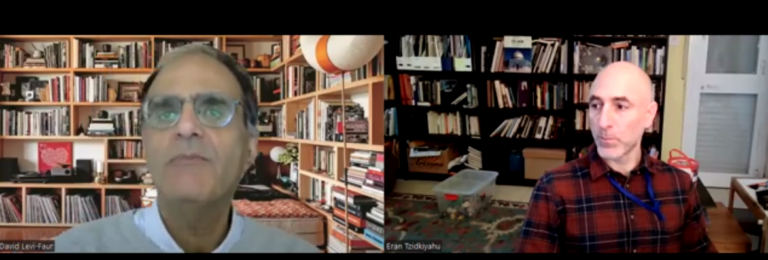First published in Hebrew on Can Think, a platform for political dialogue
In his article published on January 24th, Dr. Yair Wallach argues that the the window of opportunity for a two states solution to the Israeli Palestinian conflict is closed already. Wallach calls to give up on the illusion of the temporality of the Israeli control in the Palestinian territories and to recognize the bi-national reality that exists between the Jordan River and the Mediterranean. The author thus proclaims the end of the Zionist project and the final failure of the Palestinian National Movement. In my opinion, this declaration is premature, and fails to take into account what Israelis and Palestinians themselves really want. And this, so soon after the winds of the Arab spring blew over the Middle-East showed that the question of what “the people want…” cannot be ignored. Nevertheless, the following is not an attempt to present an opinion contradicting that of Wallach, nor to answer the question he raises, but rather to continue his line of thought towards a possible solution.
The Palestinian National leadership objected from its beginning to the creation of a mutual bi-national framework and refused the establishment of institutions for joint government with the Jews all along the 1920s and 30s. This ongoing Palestinian refusal finally started to weaken during the 1970s and 80s, and ended with Yasser Arafat’s declaration in late 1988 of the PLO’s recognition of the United Nations Security Council Resolution 242 and 338, which amounted to the recognition of the state of Israel. In 67 Israel was led by its army, which presented the control over millions of Palestinians in the occupied territories as a done fact to its state. At first the Israeli state saw these territories as a bargaining chip towards a peace agreement with the Arabs, but as the Palestinian gradually leaned towards recognizing Israel, the latter deepened its control and presence in the territories up to the point where it became its official policy and a supreme value.
Both sides now oppose a bi-national reality. With the presence of the Israeli Defense Force as a Jewish army, and a strong and frustrated Palestinian national ethos on the other side, it seems as though recognition of a bi-national reality with the same civil rights for all is a recipe for civil war and ethnic violence comparable to the Balkan wars that erupted around the fall of Yugoslavia in the 1990s.
On the other hand, as Wallach notes, reality is striking us in the face. Israel, so it seems, does not want and cannot give up on the territories, and it looks as though the Palestinians themselves are not fully ready to give up on their dreams. Geographically and economically, as well as historically and culturally speaking, there is a great logic to manage the country as one unit. On the national and political level the conflict could be resolved by forming a confederative super-framework, democratic and secular, that would be administered by a federal mechanism, as already exists in other places in the world. Inside this framework two cultural and religious autonomies will reside, one on each side of the green line. In fact, it would also be possible to decide on a triple framework composed of three autonomies: Israel, the West Bank and the Gaza Strip. In such a configuration, all sides would have to compromise on sovereignty, or on their demand for independence, and let go of their dreams so that their nightmares will not come true. On the other hand, they would actually regain the lost parts of their historical homeland.
This proposal, fantastic as it may sound, is no less logical than erecting one or more states between the river and the sea. In any case the suitable institutional framework will have to be tailor made, as indeed institutions should be made to serve the people and not the other way around. As I recently heard a Palestinian researcher saying, “with the power of will, thought and determination humankind managed to land on the moon!”. “The same humanity that landed on the moon” continued the researcher, “can also find a solution to the Israeli-Palestinian conflict. All that is needed is to genuinely want it”. It looks like the current political leadership does not want a solution, or alternatively that there are just not enough “simple people” who want it enough. It is not the Palestinian issue that gets the Israelis out to the streets anymore, and it seems as if the Palestinians themselves are caught between internal disputes and an increasing instability in the Arab world. Even though today none of the players between the river and the sea actually wants a single bi-national state doesn’t mean that it is not where we’re heading. In mid January 2011, I was calmly sipping from my steaming cup of coffee in Cairo’s Tahrir Square. A week later and without anybody anticipating it, the world went upside-down. The question we should ask today is that of what the people want and whether they want it badly enough to make it come true.



